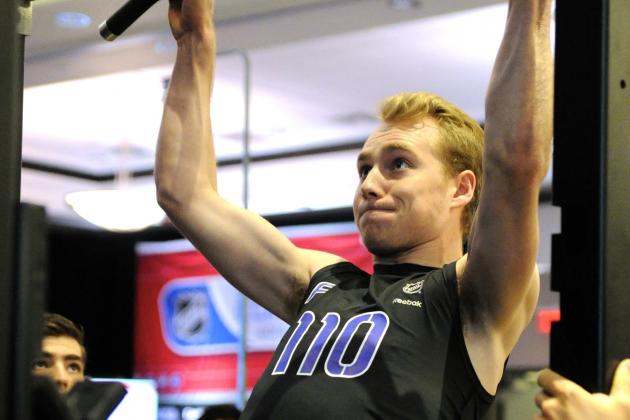If you’ve missed the news, there’s been a lot of talk about how Sam Bennett, the top ranked prospect in the upcoming NHL Draft, failed to do a single pull-up.

Photo from Getty Images
While I think it’s easy to point out the negatives of the situation, there are two really quick points that are worth considering:
In fact, a study published in 2011 (see: Physiological characteristics of National Collegiate Athletic Association Division I ice hockey players and their relation to game performance) comparing off-ice test performance to on-ice performance (e.g. +/-) found that the two off-ice tests that were most highly correlated to on-ice performance were a 12x110m sprint repeat test, and chin-up rep max test. The team tested in this study won the NCAA Division I national championship that year.
Based on some of our early testing this Summer, here are the results from the chin-up tests across different age groups:

This is obviously just a small sample of each age group, but it should paint a picture of what is fairly typical at each level. The U-16 group was the 2nd team at that age; I suspect the first team, many of which have trained with us in the past, would have put up better numbers, likely about halfway between the U-15 and U-18 averages.
Only two players of the 89 players we tested couldn’t do any, both at the U-15 age group, one of which went in for major heart surgery two weeks after we tested him (he gets a pass in my book).
Improving Your Pull-Up Performance
Having worked with several players that have made the ascension from “0”, I can attest that the hardest chin-up or pull-up to get is the first one. In other words, it’s much easier to get from 1-2 than it is to get from 0-1. With this in mind, the two major variations we use to help improve pull-up performance in our players is:
By strapping “superbands” around the chin-up handles, some of the players’ weight is unloaded, allowing them to perform the sets with the specified sets and reps. As the player gets stronger, thinner bands can be used to provide less assistance, eventually progressing to full body weight chin-ups.
These strategies are extremely effective in helping players knock out their first chin-up or pull-up. If you want to not only bang out a bunch of pull-ups, but also improve your first step quickness, speed, strength, and conditioning, check out my new Ultimate Hockey Transformation program, which is guaranteed to deliver game-changing results.
To your success,
Kevin Neeld
HockeyTransformation.com
OptimizingMovement.com
UltimateHockeyTraining.com
Please enter your first name and email below to sign up for my FREE Athletic Development and Hockey Training Newsletter!